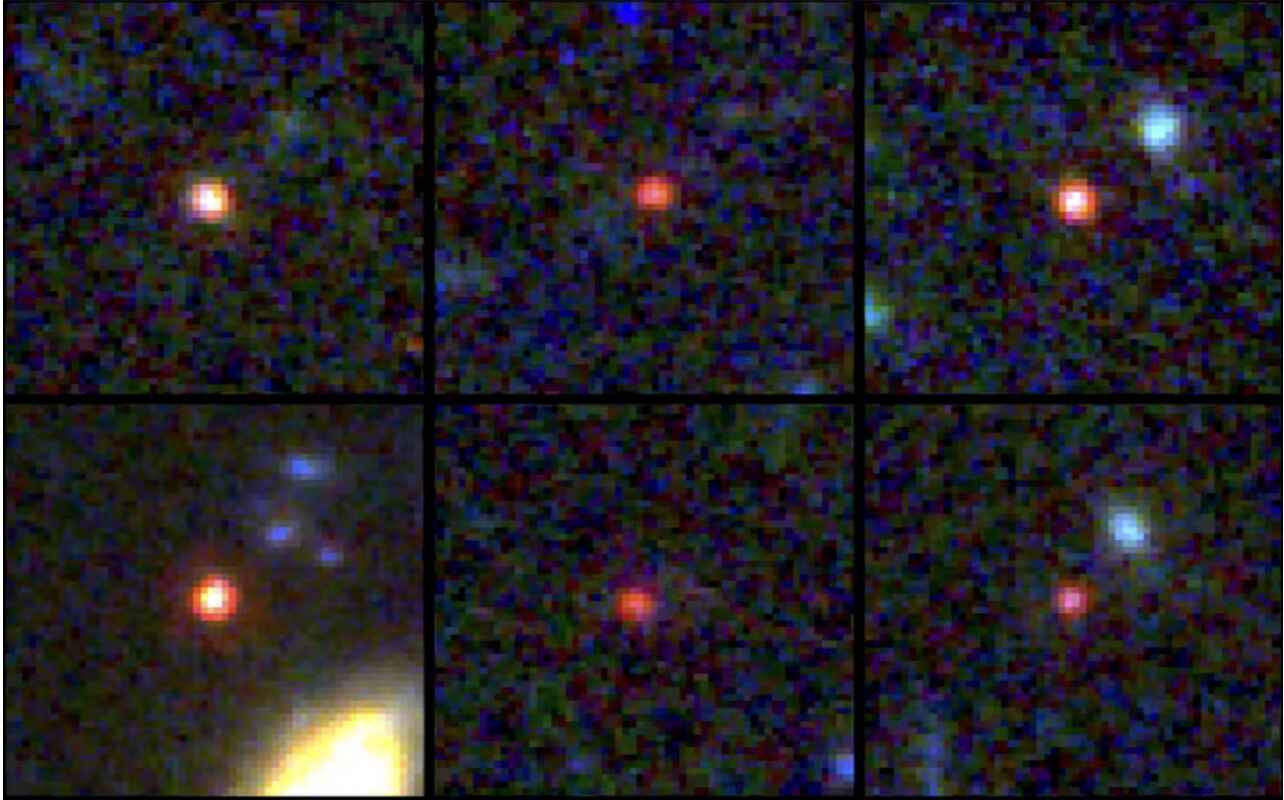The James Webb Space Telescope, using its advanced capabilities, has made a groundbreaking discovery. It has detected the most distant active supermassive black hole known to date in the galaxy CEERS 1019, which formed around 570 million years after the Big Bang. This black hole is unique because it is smaller than any other black hole observed from this early epoch of the universe.
The research team, led by Rebecca Larson, a recent PhD graduate from UT Austin, utilized the high-resolution near- and mid-infrared imagery and spectral data of the James Webb Space Telescope to conduct the Cosmic Evolution Early Release Science (CEERS) Survey.
“Looking at this distant object with this telescope is a lot like looking at data from black holes that exist in galaxies near our own,” said Rebecca
Through this survey, they not only identified the remote supermassive black hole in CEERS 1019 but also discovered two smaller black holes that existed approximately 1 billion and 1.1 billion years after the Big Bang. Additionally, they detected eleven galaxies dating back to a time when the universe was between 470 million and 675 million years old.
The black hole in CEERS 1019 is of particular interest due to its relatively low mass of around 9 million solar masses, which is significantly smaller than other black holes from the early universe detected by previous telescopes. These other black holes, typically weighing over 1 billion times the mass of the sun, are easier to detect due to their brightness. The black hole in CEERS 1019 more closely resembles the one at the centre of our own Milky Way galaxy, which is 4.6 million times the mass of the sun.
Existence and Formation

The existence of this relatively small black hole during the early stages of the universe raises intriguing questions about its rapid formation shortly after the universe's inception. While researchers have long believed that smaller black holes existed during this time, solid evidence was lacking until the observations made by the James Webb Space Telescope.
By analyzing the spectral data, the research team successfully distinguished the emissions from the black hole and its host galaxy. They also estimated the rate at which the black hole was consuming gas and determined the star-formation rate of its galaxy. The team discovered that the galaxy hosting CEERS 1019 is consuming gas at the highest possible rate while simultaneously generating new stars. Visual observations revealed that CEERS 1019 appears as three bright clumps instead of a single circular disk.
“We’re not used to seeing so much structure in images at these distances, a galaxy merger could be partly responsible for fueling the activity in this galaxy’s black hole, and that could also lead to increased star formation,” said CEERS team member Jeyhan Kartaltepe, an associate professor of astronomy at the Rochester Institute of Technology in New York.
Findings
The findings from the CEERS Survey represent only the initial breakthroughs. Steven Finkelstein, the leader of the survey, expressed excitement about the future potential of accurately measuring black holes and galaxies at extreme distances using the James Webb Space Telescope. This marks a new era in astronomical research, as previous knowledge about objects in the early universe was largely theoretical. The telescope's tremendous power will enable further research to explain the formation of early black holes and refine existing models of black hole growth and evolution in the universe's early history.
“Until now, research about objects in the early universe was largely theoretical, with Webb, not only can we see black holes and galaxies at extreme distances, we can now start to accurately measure them. That’s the tremendous power of this telescope”, Finkelstein said.
Future Discoveries
The CEERS Survey holds the promise of more exciting discoveries. Dale Kocevski and the research team quickly identified another pair of small black holes in the data. The first one, located in galaxy CEERS 2782, was easily identifiable, while the second black hole, in galaxy CEERS 746, existed slightly earlier. Although these black holes are relatively small compared to previously known supermassive black holes at such distances, they provide valuable insights. They weigh approximately 10 million times the mass of the sun.
The ability of the James Webb Space Telescope to capture these previously undetectable black holes highlights the presence of lower-mass black holes in the early universe. Researchers anticipate that lower-mass black holes may be more widespread and await further discoveries.
The sensitivity of the telescope's spectral analysis enabled precise distance measurements and age estimations for galaxies in the early universe. The research team, including Pablo Arrabal Haro and Seiji Fujimoto, identified 11 galaxies that existed between 470 million and 675 million years after the Big Bang. Not only are these galaxies extremely distant, but their brightness, considering the large number detected, challenges the theory that fewer galaxies would be observed at such distances.
“Webb was the first to detect some of these galaxies,” explained Fujimoto. “This set, along with other distant galaxies we may identify in the future, might change our understanding of star formation and galaxy evolution throughout cosmic history,” Pablo said.
The detailed spectra of these remote galaxies returned by the James Webb Space Telescope have left a profound impact on researchers. These findings, along with the identification of additional distant galaxies in the future, have the potential to revolutionize our understanding of star formation and the evolution of galaxies throughout cosmic history.
Comments
All Comments (0)
Join the conversation